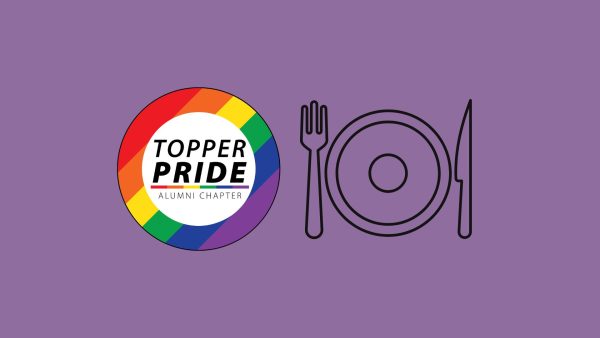‘No one has any idea it was you’: The process of becoming Big Red
Big Red hypes up the crowd with the WKU cheer team ahead of the matchup between WKU and Little Rock in E.A. Diddle Arena on Sunday, Dec. 11, 2022. WKU won 48-25.
March 31, 2023
Everyone in the WKU community is familiar with Big Red, the university’s lovable, larger-than-life mascot representing the spirit of WKU.
But the question of who is behind the costume is posed by students, faculty and fans alike, wondering about the development of Big Red’s persona – and the actors’ always anonymous identities.
Becoming Big Red is not as easy as just being able to wear the suit. One must be able to interact with fans, give a lot of time to the program, keep their identity a secret and most importantly, embody the Big Red personality.
The try-out process is straightforward. One must attend the informational meeting, make it past the interview process, fill the suit properly and prepare a two-minute skit for their Big Red audition.
But truly embodying Big Red, one of the most recognizable mascots in the country, is not that simple.
“[Big Red is] very quirky, very sneaky,” Audrey McDole, head dance coach and co-Big Red coordinator, said. “Big Red can kind of get away with anything at games or events.”
Alli Lumpkin, head cheer coach and co-Big Red coordinator, said Big Red resembles a “sassy seven year old.”
To start the process of finding the perfect Big Reds to add to their team, McDole and Lumpkin hosted an informational meeting on Feb. 20, with around 30 students attending the meeting.
Noah Metz, a past Big Red, was brought in to go over the expectations for Big Red, the time commitment and the secrecy that is required.
At the end of the meeting, Metz opened up the floor to questions. Students asked about scholarship opportunities, traveling requirements, what it’s like in the suit, height requirements, and other topics.
One of the biggest questions of the session was about the time commitment that being Big Red takes. Metz estimated that he spent around 15 hours a week in the suit, and he spent two and a half years being Big Red.
Being Big Red is also an unpaid position, however, the chosen Big Reds may be able to receive scholarship money for their time.
“I got a scholarship right at the very end of being Big Red,” Metz said. “I think I was on scholarship my last year.” Metz said.
Another popular question was about the interview and audition process.
“We’re just going to ask you really routine questions about yourself and your free time and stuff you do on campus,” Metz said. “After the interview, we’ll get in touch with you and then you’ll come back and give us an audition. The audition is where you’re actually going to be in the suit as Big Red […] you’re going to have to put together a skit or routine or some sort of performance in the Big Red suit.”
The interview and skit audition process took place from March 27-30. If students passed the interview process, they were asked to create a two minute skit.
Nine students made it to the audition process, with some being Big Reds that were wanting to return and some completely new to the process. Along with these students, there were two Big Reds about to graduate, opening up more spots for auditions.
“We want to see the candidates really bring out Big Red’s personality,” Lumpkin said. “A lot of them, if they’re not returners, they haven’t been trained. We hope that they’ve studied some Big Red moves, seen Big Red at games and just kind of mimic his actions. We really just want to see the effort of them embodying Big Red.”
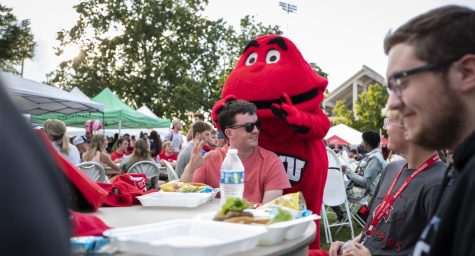
Embodying Big Red requires big movements and big gestures – students must be able to capture the personality of Big Red through their actions alone.
The auditions lasted around five to seven minutes. Each audition required a two minute skit, this could be a choreographed dance, routine, or performance.
“We let the skits be pretty open ended,” McDole said. “We don’t give a whole lot of ‘it has to fit this certain criteria.’ It has to be about two minutes, but besides that, there’s not a whole lot of direction that we give. We want to see people be creative.”
The Big Red auditions were judged by two different categories. These are the skit and the scenario categories, otherwise known as choreographed routine and expressions. Each category was judged on a scale of one to five and by its creativity, body language and entertainment value. The skit section was also judged by participants’ use of props.
The audition process was completely anonymous.
“We just knew what times people had signed up for,” Lumpkin said. “We didn’t associate names with those times and then we just named them as Big Red number one, Big Red number two, Big Red number three. That way, we didn’t know who was a returner and who was not.”
For each audition, Big Red strode into the room already in character. They would set up their props and interact with the people in the room without saying a word. Once Big Red was set-up, they would give the judges a thumbs up and the music would begin.
One Big Red performance was titled ‘A Big Red Love Story.’ In this skit, Big Red skipped into the room and gave a little wave to the judges. They set up the scene, which involved a full length mirror, a picture of the love interest and a tiny Big Red.
Once the music started, Big Red danced around the room, showing off their poster that said ‘A Big Red Love Story’ before tossing it to the side. This performance included several songs and movie quotes to tell the story.
The story showed Big Red falling in love, getting rejected, grieving the loss of love, finding themselves, falling in love and eventually proposing. Throughout the performance, the judges could be heard chuckling and seen admiring the candidates performance.
“Once you’re in that suit, you really need to embody Big Red,” Lumpkin said, “Bring it out, we want to see the whole thing.”
Once the candidate’s performance was over, they were given two scenarios. One of these scenarios was ‘Big Red’s reaction to a cheerleader ripping their pants.’ Big Red immediately gave a shocked face before running over to cover the cheerleader while they exited the field.
Another candidate’s performance was a choreographed dance to ‘Do You Wanna Taste It’ by Wig Wam. For the scenario section, they were asked ‘what would you do if a child started crying as Big Red approached.’ This candidate immediately got down on the ground and mimicked playing peek a boo. The next scenario given was ‘what would you do if an official gave a bad call to WKU.’ They started to mimic throwing a fit, stomping their feet on the ground and exaggerating arm movements.
“It’s a little hard when someone comes in if they just kind of do one thing and don’t kind of move around to different things,” McDole said. “I think we’re looking for being entertained. Big Red is super responsive in general.”
Portraying the fun-loving mascot comes with its own difficulties. Metz is familiar with the struggles that come along with being Big Red, including having to miss classes due to Big Red commitments.
“It can be super hard at times,” Metz said, “You can’t see the floor at all, so you can’t bend over very well. You can’t really reach over your head very well, can’t see very well, and it’s just heavy too. I think we weighed it when I first started being Big Red and before it gets sweaty. I think it was 32 pounds, just the suit itself. That definitely limits you.”
Being Big Red also gave Metz opportunities that other WKU students don’t experience, such as dancing on stage with Shaquille O’Neal, crowd surfing, traveling with athletics teams and getting to interact with other iconic mascots such as Aubie the Tiger from Auburn.
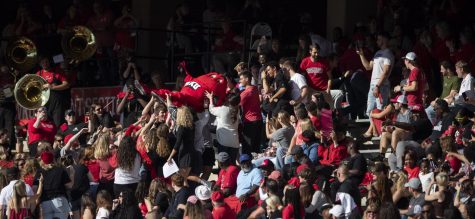
A huge part of being Big Red is keeping your identity a secret. This part used to be so intense that judges would try to trick candidates into talking during auditions, and if they spoke, then they were immediately eliminated. Big Reds could also be eliminated if their identity was revealed to any of their peers.
“It’s just so hard, especially because after a while your friends start to pick up on something like ‘oh, something’s up’, and they slowly start to figure it out,” Metz said. “All my friends and all my roommates eventually found out.”
Once the Big Reds are chosen, they will attend training sessions with a previous Big Red or Big Red Alumni. They will learn how to get in and out of the suit, the classic Big Red moves and the classic walk. The alumni will also teach the newest recruits the do’s and don’ts of being inside the suit, along with the basic rules and policies of being a mascot.
Taking on the role of Big Red comes with strong commitment and dedication to learning the persona, but it is joined by the ability to represent true WKU spirit and take part in the mascot’s legacy. Metz remembers his time in the suit fondly.
“It’s the coolest thing to be Big Red and to go up to people, even people you know, and they have no idea that it’s you,” Metz said. “You can be as crazy and wild as you want, and as soon as you’re out of suit, no one has any idea it was you.”
News reporter Izzy Lanuza can be reached at [email protected].

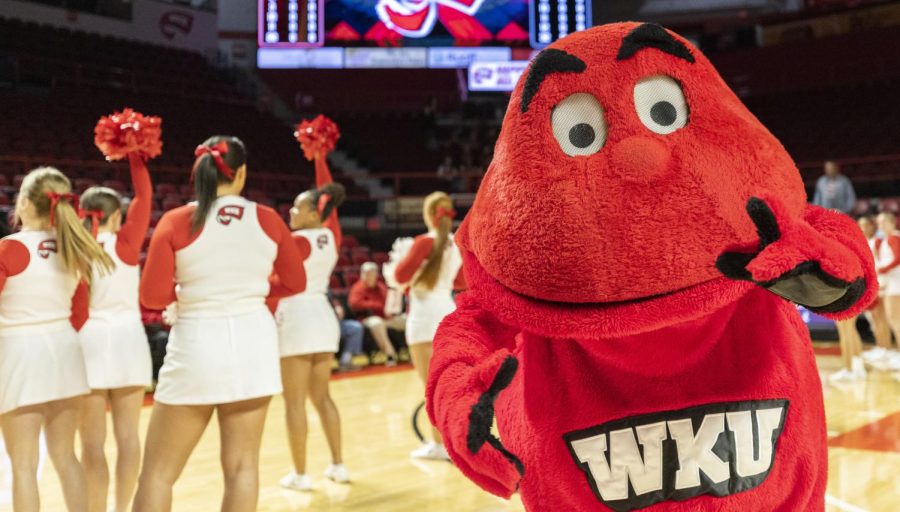













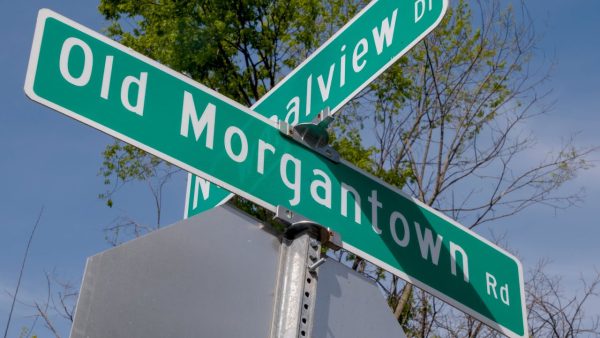
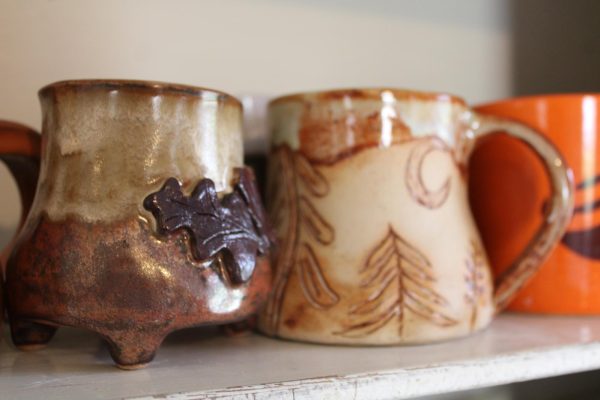
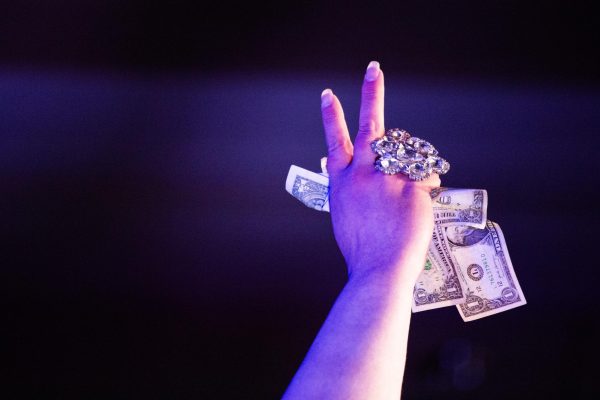



![Megan Inman of Tennessee cries after embracing Drag performer and transgender advocate Jasmine St. James at the 9th Annual WKU Housing and Residence Life Drag Show at Knicely Conference Center on April 4, 2024. “[The community] was so warm and welcoming when I came out, if it wasn’t for the queens I wouldn’t be here,” Inman said.](https://wkuherald.com/wp-content/uploads/2024/04/smith_von_drag_3-600x419.jpg)


